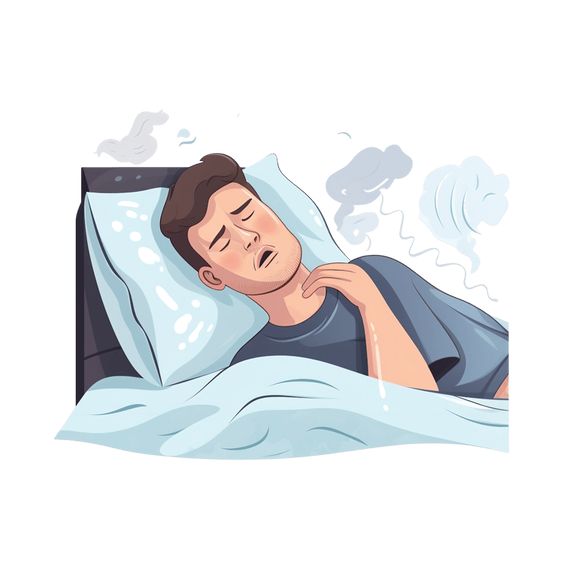
Sepsis is a serious reaction your body has to an infection, and it’s a condition that at least 1.7 million adults in America develop each year. When you have an infection, your immune system jumps into action to stop it. But in some cases, your immune system stops fighting the infection and instead starts to damage your organs and other tissues — causing inflammation throughout your body.
While that occurs, an abnormal chain reaction in how your blood cells clump together leads to clots forming in your blood vessels. These clots block the normal flow of blood and can lead to significant damage.
Although anyone can develop sepsis, some people are more at risk than others, including those 65 or older, people with weakened immune systems, people with chronic medical conditions, people who have recently been hospitalized, and infants. [CDC] The most severe complication of sepsis is septic shock, which causes a dramatic drop in blood pressure, potentially leading to organ damage.
Symptoms and Causes of Sepsis
There are many possible symptoms of sepsis because of how it affects your body. Some of the most common symptoms are [WHO]:
- Shivering
- Fever or low temperature
- Rapid breathing
- Low urine output
- Extreme pain
- Fast heart rate
- Clammy and sweaty skin
- Confusion
Septic shock symptoms include being unable to stand up, having a hard time staying awake, and extreme confusion [WHO].
Any infection can lead to sepsis, including fungal, bacterial, and viral infections — though bacterial infections are the most common ones. The conditions that are most likely to cause sepsis are:
- Bloodstream infections
- Catheter site infections
- Digestive system infections
- Wounds or burns
- Kidney infections
Most people who develop sepsis have at least one underlying condition, like a weakened immune system.
Diagnosing and Treating Sepsis
There are no real criteria to diagnose sepsis, so your healthcare provider will use a combination of tests, including blood tests, X-rays, and physical exams, to diagnose you. Your complete blood count can check for abnormal kidney and liver function, clotting problems, and signs of infection.
Imaging tests can show infection in your lungs or swelling in your brain [Sepsis Alliance].
Urine tests, like urinalysis, can tell your doctor if you have a urinary tract infection or any kidney issues. If you have a UTI, your doctor will likely perform a urine culture to see what bacteria or fungus is causing the problem [Sepsis Alliance].
The treatment of sepsis depends on its severity. You will usually be placed in the ICU and given antibiotics if you have a bacterial infection. Most of the time, your doctor will choose broad-spectrum antibiotics, which help with a broader range of bacteria. You will also receive fluids to prevent your blood pressure from dropping. Vasopressors may also be used since they narrow blood vessels and increase blood pressure [WHO].
If you have organ failure, you will receive supportive care, which can include oxygen, dialysis, and more.
In some instances, surgery may be necessary to remove damaged tissue.
Preventing Sepsis
Sepsis is not always preventable, but you can decrease your chances of getting it by practicing good hygiene, including washing your hands regularly. If you have chronic medical conditions, getting routine check-ups is essential. That way, your doctor can catch any infections before they get worse.
Know the symptoms that point to an infection. As soon as you notice them, reach out to your doctor.
Familiarize yourself with the recommended vaccines for your age and keep up with them. If you’re not sure what options are appropriate, ask your doctor.
If you have a cut or any other wound, keep it clean and covered until it has healed to prevent the introduction of any bacteria.
If you suspect you have an infection, consider contacting your healthcare provider as soon as possible.
Life After Sepsis
If you receive prompt treatment, you have a good chance of recovering completely. However, you’ll have a higher risk of developing sepsis again once you’ve had it. [CDC]
You will likely need rehabilitation before returning home. You may experience shortness of breath and fatigue even when you get home. Give yourself time to heal, and don’t rush into your everyday life.
Perhaps the most important thing to remember is that if you experience signs of an infection, you want to contact your healthcare provider as soon as possible. The sooner you catch the infection, the better your chances of making a complete recovery.
Resource Links:
- “What Is Sepsis?” via Centers for Disease Control and Prevention
- “Sepsis” via The World Health Organization
- “Septic Shock” via National Library of Medicine
- “Septicemia” via Johns Hopkins Medicine
- “Testing for Sepsis” via Sepsis Alliance






